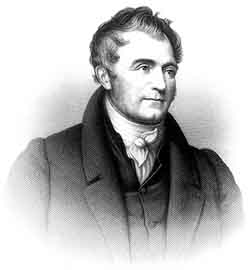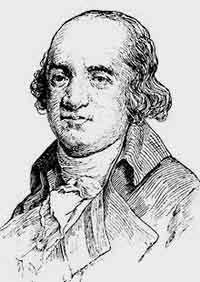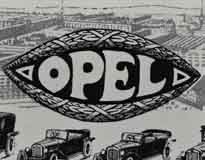The du Pont Company
By Richard Sanders, Editor, Press for Conversion!
In the 1930s, the du Pont and Morgan
family empires dominated the American corporate elite and their
representatives were central figures in organizing and funding
the American
Liberty League. The du Pont family was so complicit in this
fascist organization that James Farley, FDR's postmaster general
and one of his closest advisors, said the American Liberty League
"ought to be called the American Cellophane League"
because "first it's a Du Pont product and second, you can
see right through it'" (Donald R. McCoy, Coming of Age).
Gerard Colby, in his book DuPont Dynasty, outlines the
family's pivotal role in creating and funding the League. (Click
here for an excerpt.) The Dickstein-McCormack
Committee learned that weapons and equipment for the fascist
plotters’ Croix
de feu-like superarmy “could be obtained from the Remington
Arms Co., on credit through the Du Ponts.” Du Pont had acquired
control of the arms company in 1932.

 The
du Pont Co., formed in 1802 by Elèuthere Irénée
du Pont de Nemours, dominated U.S. gunpowder sales for more than
a century. Elèuthere I. du Pont’s father, Pierre Samuel,
a French economist, politician and publisher had helped negotiate
the Paris Treaty to end America’s revolution. His rightwing
views made French radicals very suspicious and they sentenced
him to the guillotine. Somehow, he and his son, Elèuthere,
were released and escaped to America, where they arrived January
1, 1800, with a vast fortune.
The
du Pont Co., formed in 1802 by Elèuthere Irénée
du Pont de Nemours, dominated U.S. gunpowder sales for more than
a century. Elèuthere I. du Pont’s father, Pierre Samuel,
a French economist, politician and publisher had helped negotiate
the Paris Treaty to end America’s revolution. His rightwing
views made French radicals very suspicious and they sentenced
him to the guillotine. Somehow, he and his son, Elèuthere,
were released and escaped to America, where they arrived January
1, 1800, with a vast fortune.
To challenge England’s domination of the global gunpowder
trade, Napoleon helped E.I. du Pont establish an American gunpowder
business in 1802. Pierre returned to France and negotiated the
French sale of about a million square miles of land to America
(Louisiana Purchase, 1803). Meanwhile, his son made his first
gunpowder sales to a close family friend, President Thomas Jefferson.
Du Pont produced only gunpowder. They were the main supplier
of this product during many wars, including:
* War of 1812 (supplying the U.S. against Britain/Canada)
* South American wars (supplying both Spain and Bolivar’s
republics)
* Mexican-American War, 1846 (supplying the U.S.)
* Indian Wars, 1827-1896 (supplying Manifest Destiny’s
genocidal westward expansion)
* Crimean War, 1854 (supplying both England and Russia)
* U.S. Civil war, 1861-1865 (supplying the Northern states)
* Spanish-American War, 1898 (supplying the U.S.)
* WWI, 1914-1918 (supplied all U.S. orders; 40% of the Allies’
needs)
In 1897, when they agreed with European competitors to divide
up the world, du Pont got exclusive control of gunpowder sales
in the Americas. By 1905, du Pont had assets of 60 million and
controlled all U.S. government orders. Du Pont bought out 100
of its American competitors and closed most of them down (1903-1907).
In 1907, U.S. anti-Trust laws created two competitors for du Pont
and in 1912 the government ordered du Pont to divest from some
explosives production. Du Pont then diversified into newspaper
publishing, chemicals, paints, varnishes, cellophane and rayon.
WWI was particularly profitable. Du Pont, the world’s largest
producer of dynamite and smokeless gunpowder, made unheard-of
net profits of $250 million.
Between the wars, du Pont was the world’s top manufacturer
of explosives, the world’s leading chemical company and the
top producer of cars and synthetic rubber, another strategic war
material. By the 1930s, it owned Mexican and Chilean explosive
companies and a Canadian chemical company. Although still the
top U.S. gunpowder supplier, this product represented only 2%
of its total production.
Du Pont’s General Motors Co. funded a vigilante/terrorist
organization to stop unionization in its Midwestern factories.
Called the “Black Legion,” its members wore black robes
decorated with a white skull and crossbones. Concealed behind
their slitted hoods, this KKK-like network of white-supremacist
thugs threw bombs into union halls, set fire to labor activists’
homes, tortured union organizers and killed at least 50 in Detroit
alone. Many of their victims were Blacks lured North by tales
of good auto-plant jobs. One of their victims, Rev. Earl Little,
was murdered in 1931. His son, later called Malcolm X, was then
six. An earlier memory, his first, was a night-time raid in 1929
when the Legion burnt down their house. Gerard Colby had this
to say about the Black Legion in his book Dupont Dynasty (1984):
"But corporate executives did not give up the tactic
of vigilante groups, and on June 1, 1936, Cowdrick wrote Harry
Anderson, G.M's labor relations director, to ask his opinion
of the Sentinels
of the Republic. Anderson was apparently unaware of Irénée
du Pont's support of this organization, but offered his own home-brew
alternative. "With reference to your letter of June 1 regarding
the Sentinels of the Republic," he replied a few days later,
"I have never heard of the organization. Maybe you could
use a little Black Legion down in your country. It might help."
The "Black Legion" Anderson referred to was indeed
a great help to General Motors in its struggle to prevent auto
workers from unionizing. With members wearing black robes and
slitted hoods adorned with white skull and crossbones, the Black
Legion was the terror of Michigan and Ohio auto flelds, riding
like Klansmen through the night in car caravans, bombing union
halls, burning down homes of labor militants, and flogging and
murdering union organizers. The organization was divided into
arson squads, bombing squads, execution squads, and anti-communist
squads, and membership discipline on pain of torture or death
was strictly enforced. Legion cells filled G.M. factories, terrorizing
workers and recruiting Ku Klux Klansmen.
Since 1933 the Black Legion's power had permeated police departments."
The Legion, claiming 200,000 members in Michigan, was divided
into distinct squads, each focused on a different aspect of their
work for du Pont: arson, bombing, execution and anti-communism.
The Legion’s cells within GM factories intimidated workers,
targeted Jews and recruited for the KKK. They worked together
to stop Reds and unions that demanded their labour rights.
Thanks to a Senate Munitions Investigating Committee (1934-1936)
that examined criminal, warprofit-eering practices of arms companies
during WWI, the public learned that du Pont had led munitions
companies in sabotaging a League of Nations’ disarmament
conference in Geneva. The committee’s chair, Gerald Nye,
said that once “the munitions people of the world had made
the treaty a satisfactory one to themselves,...Colonel Simons
[of Du Pont] is reporting that even the State Department realized,
in effect, who controlled the Nation.”
The du Ponts fought back against widespread public condemnation
that rightly labeled them “merchants of death.” They
claimed that communists were behind the Senate hearings, and blamed
the Committee for undermining U.S. military power. In response,
Chairman Nye, a Republican from North Dakota, pointing out that
du Pont had made six times as many millions of dollars during
WWI than during the preceding four years “so naturally Mr.
du Pont sees red when he sees these profits attacked by international
peace.” 
 The du Pont Co., and particularly
GM, was a major contributor to Nazi military efforts to wipe communism
off the map of Europe. In 1929, GM bought Adam Opel, Germany’s
largest car manufacturer. In 1974, a Senate Subcommittee on Antitrust
and Monopoly heard evidence from researcher Bradford Snell proving
that that in 1935, GM opened an Opel factory to supply the Nazi’s
with “Blitz” military trucks. In appreciation, for this
help, Adolf Hitler awarded GM’s chief executive for overseas
operations, James Mooney, with the Order of the German Eagle (first
class). Besides military trucks, Germany’s GM workers also
producing armored cars, tanks and bomber engines.
The du Pont Co., and particularly
GM, was a major contributor to Nazi military efforts to wipe communism
off the map of Europe. In 1929, GM bought Adam Opel, Germany’s
largest car manufacturer. In 1974, a Senate Subcommittee on Antitrust
and Monopoly heard evidence from researcher Bradford Snell proving
that that in 1935, GM opened an Opel factory to supply the Nazi’s
with “Blitz” military trucks. In appreciation, for this
help, Adolf Hitler awarded GM’s chief executive for overseas
operations, James Mooney, with the Order of the German Eagle (first
class). Besides military trucks, Germany’s GM workers also
producing armored cars, tanks and bomber engines.
Du Pont’s GM and Rockefeller’s
Standard Oil of New Jersey collaborated with I.G. Farben, the
Nazi chemical cartel, to form Ethyl GmbH. This subsidiary, now
called Ethyl Inc., built German factories to give the Nazis leaded
gas fuel (synthetic tetraethyl fuel) for their military vehicles
(1936-1939). Snell quotes from German records captured during
the war:
"The fact that since the beginning of the war we could
produce lead-tetraethyl is entirely due to the circumstances
that, shortly before, the Americans [Du Pont, GM and Standard
Oil] had presented us with the production plants complete with
experimental knowledge. Without lead-tetraethyl the present method
of warfare would be unthinkable."
Since WWII, du Pont has continued to be an instrument of U.S.
government weapons production. Besides supplying plastics, rubber
and textiles to military contractors, it invented various new
forms of explosives and rocket propellants, manufactured numerous
chemical weapons and was instrumental in building the world’s
first plutonium production plant for the atomic bomb. It pumped
out Agent Orange and Napalm, thus destroying millions of lives,
livelihoods and whole ecosystems in Southeast Asia.
With 2,000 brand names, 100,000 employees and annual sales
of $25 billion in 1998, du Pont is one of the world’s biggest
corporations. It’s 1939 slogan, “Better Things for Better
Living…Through Chemistry,” belies a destructive legacy
that will last thousands of generations. One of the globe’s
worst polluters, it pioneered the creation, marketing and coverup
of almost every dangerous chemical toxin ever known. It now faces
countless lawsuits for the adverse health and environmental effects
of its products, the unsafe working conditions in its factories
and the foolhardy, disposal practices it flaunts as final solutions
for its waste products. Here is a small sampling of du Pont’s
gifts to the planet:
* Sulphur dioxide and lead paint
* CFCs: 25% of the world’s supply and almost 50% of the
U.S. market.
* Herbicides and pesticides: brain damage, hormone system disruption.
* Formaldehyde: cancer and respiratory illnesses.
* Dioxins: Leading the way to create these carcinogens, du Pont
then suppressed data on their deadly effects.
* Highly-processed, unnutritious products marketed as healthy
food.
* Genetically modified foods and “Terminator”/“Killer
seeds” threaten food security for 1.4 billion people who
depend on farm-saved seeds.
* Patenting plant genes and stealing the Third World’s genetic
resources.
* Using U.S. prison labour and factories in many oppressive regimes.
* Its oil subsidiary, Conoco, provided petrochemical raw materials
and caused environmental devastation.
* Du Pont is one of the world’s biggest producers of green
house gases.
* Sold for 33 years, the fungicide Benlate destroyed crops, shrimp
farms and caused birth defects.
* Since the 1920s, du Pont produced leaded gas which is responsible
for 80-90% of the world’s environmental lead contamination.
Besides fueling Nazi war machines that rolled and flew across
Europe killing tens of millions, this product’s legacy includes
retarding children’s mental health and causing hypertension
in adults. Du Pont’s helped stop the U.S. ban until 1996,
and then increased its overseas sales.
References:
H.C. Engelbrecht and F.C. Hanigan, Merchants of Death, 1934
DuPont (E. I. DuPont de Nemours & Co.)
http://www.corporatewatch.org.uk/profiles/dupont/dupont4.htm
Gerard Colby, Du Pont Dynasty, 1984
Charles Higham, Trading with the Enemy, 1983.
Researchers Morton Mintz and Jerry S. Cohen, in their book,
"Power Inc.,
The Elkhorn Manifesto Part II, U.S. CORPORATIONS AND THE NAZIS
http://www.wealth4freedom.com/Elkhorn2.html
"Explosives," Dupont website
http://heritage.dupont.com/floater/fl_explosives/floater.shtml
El-Hajj Malik El-Shabazz "Malcolm X"
http://www.geocities.com/SoHo/Studios/2469/malcolm2.html
Source: Press for Conversion!
magazine, Issue # 53, "Facing the Corporate Roots of American
Fascism," March 2004. Published by the Coalition to Oppose the Arms Trade.
Order a Copy: Order
a hard copy of this 54-page issue of Press for Conversion!
on the fascist plot to overthrow President F.D.Roosevelt and
the corporate leaders who planned and financed this failed coup.
 Irénée
du Pont (1876-1963)
Irénée
du Pont (1876-1963)
By Charles Higham
Irénée, the most imposing and powerful member
of the du Pont clan, was obsessed with Hitler’s principles.
He keenly followed the future Fuhrer’s career in the 1920s.
On Sept. 7, 1926, in a speech to the American Chemical Society,
he advocated a race of supermen, to be achieved by injecting special
drugs into them in boyhood to make their characters to order.
He insisted his men reach physical standards equivalent to that
of a Marine and have blood as pure as that in the veins of the
Vikings. Despite the fact that he had Jewish blood in his own
veins, his anti-Semitism matched that of Hitler.
In outright defiance of Roosevelt’s desire to improve
working conditions for the average man, GM and the Du Ponts instituted
the speedup systems. These forced men to work at terrifying speeds
on the assembly lines. Many died of the heat and pressure, increased
by fear of losing their jobs. Irénée paid almost
$1 million from his own pocket for armed and gas-equipped storm
troops modeled on the Gestapo to sweep through the plants and
beat up anyone who proved rebellious. He hired the Pinkerton Agency
to send its swarms of detectives through the whole [du Pont] chemicals,
munitions and auto empire to spy on left-wingers or other malcontents.
Source: Trading with the Enemy: An Expose of the
Nazi-American Money Plot 1933-1949, 1983.

 The
du Pont Co., formed in 1802 by Elèuthere Irénée
du Pont de Nemours, dominated U.S. gunpowder sales for more than
a century. Elèuthere I. du Pont’s father, Pierre Samuel,
a French economist, politician and publisher had helped negotiate
the Paris Treaty to end America’s revolution. His rightwing
views made French radicals very suspicious and they sentenced
him to the guillotine. Somehow, he and his son, Elèuthere,
were released and escaped to America, where they arrived January
1, 1800, with a vast fortune.
The
du Pont Co., formed in 1802 by Elèuthere Irénée
du Pont de Nemours, dominated U.S. gunpowder sales for more than
a century. Elèuthere I. du Pont’s father, Pierre Samuel,
a French economist, politician and publisher had helped negotiate
the Paris Treaty to end America’s revolution. His rightwing
views made French radicals very suspicious and they sentenced
him to the guillotine. Somehow, he and his son, Elèuthere,
were released and escaped to America, where they arrived January
1, 1800, with a vast fortune.
 The du Pont Co., and particularly
GM, was a major contributor to Nazi military efforts to wipe communism
off the map of Europe. In 1929, GM bought Adam Opel, Germany’s
largest car manufacturer. In 1974, a Senate Subcommittee on Antitrust
and Monopoly heard evidence from researcher Bradford Snell proving
that that in 1935, GM opened an Opel factory to supply the Nazi’s
with “Blitz” military trucks. In appreciation, for this
help, Adolf Hitler awarded GM’s chief executive for overseas
operations, James Mooney, with the Order of the German Eagle (first
class). Besides military trucks, Germany’s GM workers also
producing armored cars, tanks and bomber engines.
The du Pont Co., and particularly
GM, was a major contributor to Nazi military efforts to wipe communism
off the map of Europe. In 1929, GM bought Adam Opel, Germany’s
largest car manufacturer. In 1974, a Senate Subcommittee on Antitrust
and Monopoly heard evidence from researcher Bradford Snell proving
that that in 1935, GM opened an Opel factory to supply the Nazi’s
with “Blitz” military trucks. In appreciation, for this
help, Adolf Hitler awarded GM’s chief executive for overseas
operations, James Mooney, with the Order of the German Eagle (first
class). Besides military trucks, Germany’s GM workers also
producing armored cars, tanks and bomber engines. Irénée
du Pont (1876-1963)
Irénée
du Pont (1876-1963)